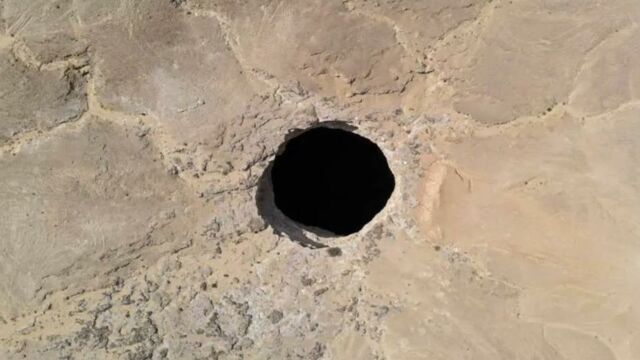'The well of hell' is what the Yemenis call the well of Barhout located in the Al-Mahra desert, near the border with Oman. It is mysterious, firstly because it is a natural wonder whose origin is neither known nor understood, which of course gives rise to many interpretations. But also because of its titanic size: 30 metres wide, its depth (still unexplored by man) is estimated at between 100 and 250 metres. So, is it a natural wonder or a conduit straight to hell?
Discover our latest podcast
A prison for demons according to local beliefs
The hole is impressive in photo alone, so it is understandable that it is feared by the local people who do not dare to venture near. Fully dark from the outside, even sunlight does seem to avoid it. Only a few birds frequent the area.
According to local superstition, any object or person who approaches it... is sucked in and never seen again. For the inhabitants of the region, it would serve as a prison for demons. A belief reinforced by the nauseating odours that emanate from it.
One can imagine that such a phenomenon has given rise to many stories over the centuries. There is no certainty, but there are legends such as that of the 'djinns,' these often evil desert spirits who live in the well. For others, it could be a threat to life on Earth. It is better not to even mention it, or risk a curse.

A depth never reached by man
Even Yemeni officials say they don't know what might be inside. Salah Babhair, the director general of the local Geological Survey and Mineral Resources Authority, estimates that the well is 'millions and millions of years old.'
It is very deep, we have never reached the bottom of this well as there is little oxygen and no ventilation.
And for good reason, it is between 100 and 250 metres deep.
We went to visit the area and entered the shaft. We reached a depth of more than 50-60 metres and noticed some strange things inside. We also smelled a strange smell... It's very mysterious.
While even geologists don't seem to hold the secrets of this mysterious hole, the official acknowledges that more work is needed.
These places need more study, research and investigation.















